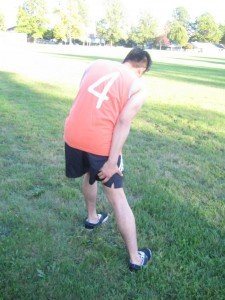Joint hypermobility simply means that a few or all of the joints in the body have a remarkably wide range of movement. Individuals with joint hypermobility are quite flexible and capable of moving the limbs into points that others could not achieve.
What is joint hypermobility syndrome?
Many individuals who have hypermobile joints do not have any issues and some such as gymnasts and ballet dancers can actually benefit from the increased level of flexibility. Nevertheless, some with joint hypermobility can suffer from undesirable symptoms such as the following:
- Clicking joints
- Pain and rigidity in the muscles and joints
- Fatigue
- Joints that easily dislocate
- Recurrent injuries
- Stretchy or thin skin
- Digestive issues such as constipation
- Fainting and dizziness
In case hypermobility occurs along with these symptoms, it is diagnosed by doctors as joint hypermobility syndrome.
Causes of joint hypermobility
Always bear in mind that hypermobility is often hereditary. One of the major causes is believed to be genetically-linked changes to a certain type of protein known as collagen.
In case collagen is weaker than it should be, the tissues in the body of the individual are fragile which makes the ligaments and joints stretchy and slack. As an outcome, the joints are capable of extending further than usual.

Life with joint hypermobility
Many individuals who have hypermobile joints will not experience any issues and does not require any medical treatment or support. Nevertheless, joint hypermobility syndrome can be hard to live it since it can cause a variety of symptoms that many find undesirable and can disrupt with normal living.
Individuals who have joint hypermobility syndrome can greatly benefit from a combination of regulated exercise and physiotherapy as well as additional measures to help manage the pain and make daily tasks easier.
Take note that the nature of joint hypermobility syndrome puts an individual at risk for various injuries such as sprains and dislocations. Proper management of the condition might also include the treatment of short-term injuries once they occur while complying with a long-term treatment plan to manage the daily symptoms.
Who are affected?
Joint hypermobility is considered quite common especially among children and young individuals. It is estimated that some individuals in different parts of the globe have hypermobile joints.
In most circumstances, the joints start to stiffen with age, although joint hypermobility and the associated symptoms can persist up to adult life. In some cases, the condition is often not recognized and misdiagnosed. It is believed to be quite common among women than men.
